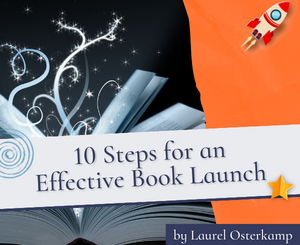13 Prime Principles of Plot, a Guest Post by Alicia Rasley
 Please welcome guest author, Alicia Rasley as she shares with us “13 Prime Principles of Plot.” Enjoy!
Please welcome guest author, Alicia Rasley as she shares with us “13 Prime Principles of Plot.” Enjoy!
***
Hello! Thank you, Beth, for letting me visit.
I wanted to share with your readers a few basic principles about plotting a story. We can notice a theme here:
- Plausible plotting starts with cause and effect.
- Your protagonist should save the day (or destroy it).
- Give the protagonist a goal, then take it away.
- The point of plot is change.
- Lead readers to the story, but don’t drag them.
- Make the internal come external.
- Twist a cliché.
- Coincidence kills plausibility.
- “Exposition is ammunition.”
- Less is more.
- Center each scene.
- Find the excitement in every scene.
- Always go back to character.
From the first principle about cause and effect, to the last about character, there’s a basic theme here: Plot is about causing change, especially change in the characters.
So the plot events become more “effectual” because they cause the characters to change. Those events matter because they affect the story people. That double-effect (on the plot and the characters) will mean the readers will keep reading!
The last thing you want is for the reader to skim. Okay, the REAL last thing you want is for the reader to throw the book at the wall and then post a bad review on Amazon. But… the next worst thing is to have the reader decide that whole sections of your book (you know, the pages you sweat blood writing!) aren’t really worth reading. You don’t want your book to be skimmable because the readers realized they could read only 45% of it and still get all the important stuff.
To make the readers read every word, every scene, you have to make them trust that you’re making it worth it, that every event, however seemingly trivial, is going to accumulate with other events to be important somehow. And to build this trust, you have to show the skein of cause-effect events starting early—whatever event happens in the opening scene to disrupt the world (the “inciting incident”) causes something else to happen, which causes something ELSE to happen.
If the events in Chapter One are linked to effects in Chapters Two and Three (most specifically, that they start the main characters on some journey or change!), the readers are already captured.
Usually, for change to happen, the main characters have to have something at stake—something they want or don’t want, something that is threatened by the events. So let’s think about what the main character has at stake in this story. Here’s a quick exercise to help link the opening of the plot to the need for character change.
- Fill in the blanks: (Protagonist name) ____________ wants (goal)
_________________ by (time, date, occasion) _______________, because (motivation) ______________. If (name) _____________ doesn’t get this, (he/she) _____ thinks that (something bad) _______________ will happen. If (name) ______________ does get this, (he/she) ______ thinks that (something good) ________________ will happen.
So: Justin wants to propose to Genie Thorne this weekend because he needs her father’s land to expand his own estate. If Justin doesn’t get betrothed to her, he thinks that he will have failed in his responsibility to the family. If he does get betrothed to her, he thinks that he can check one more duty off his to-do list—his very long to-do list—and he won’t have to feel guilty and irresponsible. Unfortunately, it will doom them both to a loveless marriage.
That is, the goal reveals the motivation… his hyper-responsibility—and the conflict—how he has given up on real love because he thinks he has no choice but to marry this woman for the family’s well-being. I’m identifying that I have to make sure that the plot events will change that so that he resolves that conflict and marries only for love.
Try that exercise with your own story. What connection can you make between the plot events and the main character’s need for change?
I love to analyze story and write about how plot and characters connect. If you’d like to read more about the 13 Prime Principles of Plot and other writing issues, you can get an instant download of the e-book here.
***
ABOUT THE AUTHOR
 Alicia Rasley lives in Regency England– well, no. She just writes about it! She lives in the American midwest, surrounded by books about Regency England. Her Regency romances have won several awards, including the prestigious RITA for Best Regency Romance. She has also written women’s fiction, mystery, and non-fiction books. She teaches writing online and at a state university, hoping to instill the love of commas into today’s college students.
Alicia Rasley lives in Regency England– well, no. She just writes about it! She lives in the American midwest, surrounded by books about Regency England. Her Regency romances have won several awards, including the prestigious RITA for Best Regency Romance. She has also written women’s fiction, mystery, and non-fiction books. She teaches writing online and at a state university, hoping to instill the love of commas into today’s college students.






